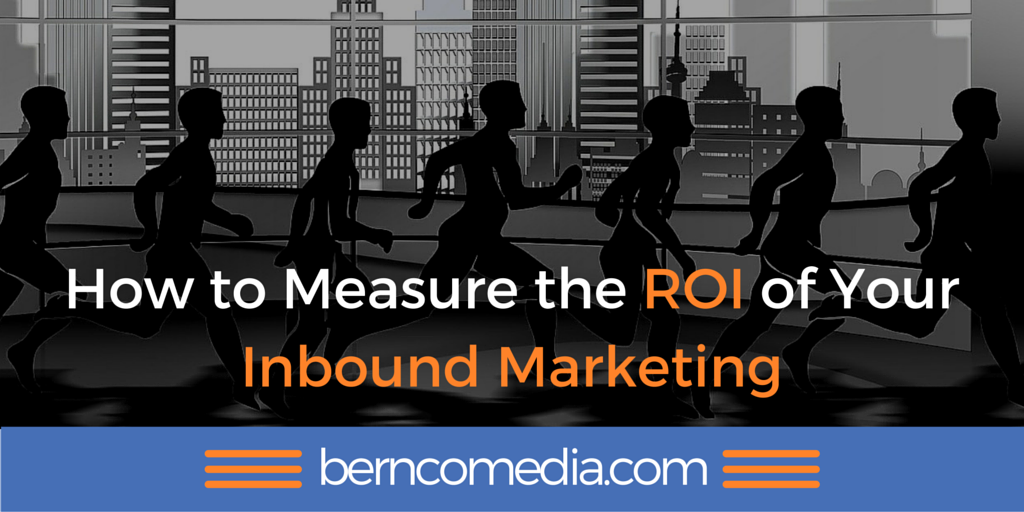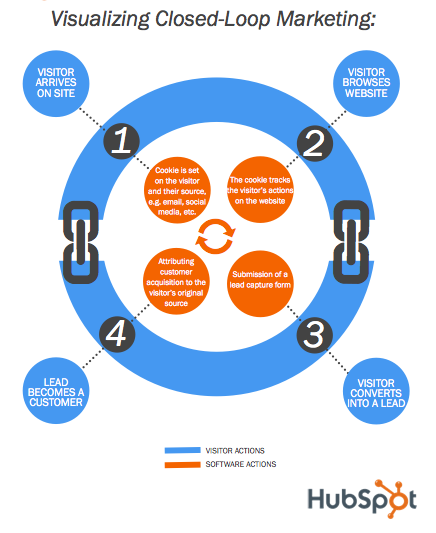How to Measure the ROI of Your Inbound Marketing
March 15th, 2016
3 min read

Inbound marketing isn't like a Black Friday sale or a periodic email blast.
It's a marathon-like method of increasing traffic and boosting sales numbers, which can make tracking ROI a little confusing.
Plus, inbound is the octopus of marketing strategies. You have tentacles trailing in all directions, each focusing on a specific metric or target. So how do you reconcile all these moving parts so you know how much you're benefiting from your inbound marketing campaign?
Measure Data Over Long Time Periods

Take the long-haul approach to measuring ROI for inbound marketing.
There's a light at the end of the inbound marketing tunnel, but you have to get there first. You might feel tempted to start crunching numbers a week after you launch your new blogging campaign, but hold off and let your efforts gain steam.
HubSpot reports that 85 percent of businesses that are using inbound marketing see traffic increases within seven months. That's more than 200 days, which means a week's worth of data won't tell you much about ROI.
After you've devoted your brand to inbound marketing for a few months, start looking at the numbers. You can calculate ROI in several ways, each of which offers new insight into your program's effectiveness.
Implement Closed-Loop Marketing
HubSpot recommends closed-loop marketing, which relies on closed-loop reporting to ensure that every step of the inbound marketing process is not only documented but shared between departments. Essentially, you're closing the loop between marketing, advertising, and sales so that you know exactly how each department feeds into the other.
 For instance, you spend money attracting prospects to your website through outbound and inbound marketing techniques, such as blogging and social media activity. Maybe you use a retargeting advertising campaign to snag their interest, too. You might be using landing pages with strong calls to action to convince leads to hand over their contact information.
For instance, you spend money attracting prospects to your website through outbound and inbound marketing techniques, such as blogging and social media activity. Maybe you use a retargeting advertising campaign to snag their interest, too. You might be using landing pages with strong calls to action to convince leads to hand over their contact information.
Next, you invest more capital into closing the deal. You'll keep in touch via email and use marketing automation tools to make it easier to process the sale. Then your lead finally makes a purchase.
Without closed-loop reporting, your marketing team won't know which of their efforts resulted in conversions, and your marketing team can't analyze the steps they took to help your sales team close the deal. It's inefficient, but more importantly, it makes it harder to track ROI.
Differentiate Between Hard and Soft Metrics
ROI is a complex issue that requires multiple strategies and viewpoints. For instance, you can calculate ROI based on both hard and soft metrics.
Hard metrics describe data that is easily quantified. If you sell a product to a client for $100, and you spend $57 on an advertising campaign to close the deal, your ROI is 75.44 percent.
Soft metrics are a little harder to pin down. For instance, you can't easily quantify brand loyalty or social media interest, but both qualities contribute to your bottom line. If you assign dollar values to soft metrics, you can use those values to determine your ROI just as you would with hard metrics.
The value of a soft metric depends on its contribution to lead conversions and sales. How much does user engagement on social media contribute to your sales numbers? Once you know that, you can decide where to focus the majority of your energy.
Differentiate Between Profit and Revenue

Knowing exactly what value your ROI describes is essential for analyzing it effectively.
Some businesses calculate ROI based on revenue. In other words, they compare the cost of closing a sale against the amount of money the customer paid. It sounds like a good way to find where your business stands on the ROI scale, but it's actually a flawed methodology.
The cost of marketing and advertising is only part of the equation. If you're selling products, for instance, you spend money bringing the product to market. You pay for R&D, materials, and other expenses.
Similarly, if you provide a service, you pay your employees to provide that service. You might also cover tools, materials, and other costs.
Consequently, you'll base your decisions on more concrete data if you use your gross profit to calculate the ROI for inbound marketing. Before you compute equations, subtract the amount you spent to bring the product or service to market from the total amount of the sale. Now you know your ROI based on the amount of profit the sale generated.
Identify the Most Important Numbers
As you can see, the ROI for inbound marketing is complicated. It can involve numerous factors, from engagement levels to specific sales numbers, so you might not know where to start.
Begin with the most critical metrics. For instance, if you have invested significant time, energy, and financial resources into content creation, your lead generation metrics from content marketing might serve as the first step in your calculations.
Other important metrics to track include the number of organic visitors that land on your website, the average leads your website is able to generate, and the percentage of total leads that actually convert. Start calculating ROI based on those metrics, then add in new variables as their value becomes apparent.
You can also calculate the ROI for your competitors' inbound marketing efforts. If you know how well they perform in specific areas, you can more accurately target the right approach. For instance, if your competitor is generating more leads via social media, you know you need to concentrate on platforms like Facebook, LinkedIn, Twitter, and Instagram. From there, you can target your ROI calculations for those efforts.
I hope this gives you a few ideas on where to get started when it comes to calculating your inbound marketing ROI.
Until next time,
Doc
Owner/Head Coach @ Bernco Media. Digital sales & marketing since 1997. Passion for teaching companies to be the most trusted voice in their space. They Ask, You Answer Certified Coach & HubSpot Certified Partner & Trainer. Reversed Type 2 Diabetes doing KETO. Wears Mickey Mouse Daily. Daydreaming of next Disneyland Trip.
Topics:
